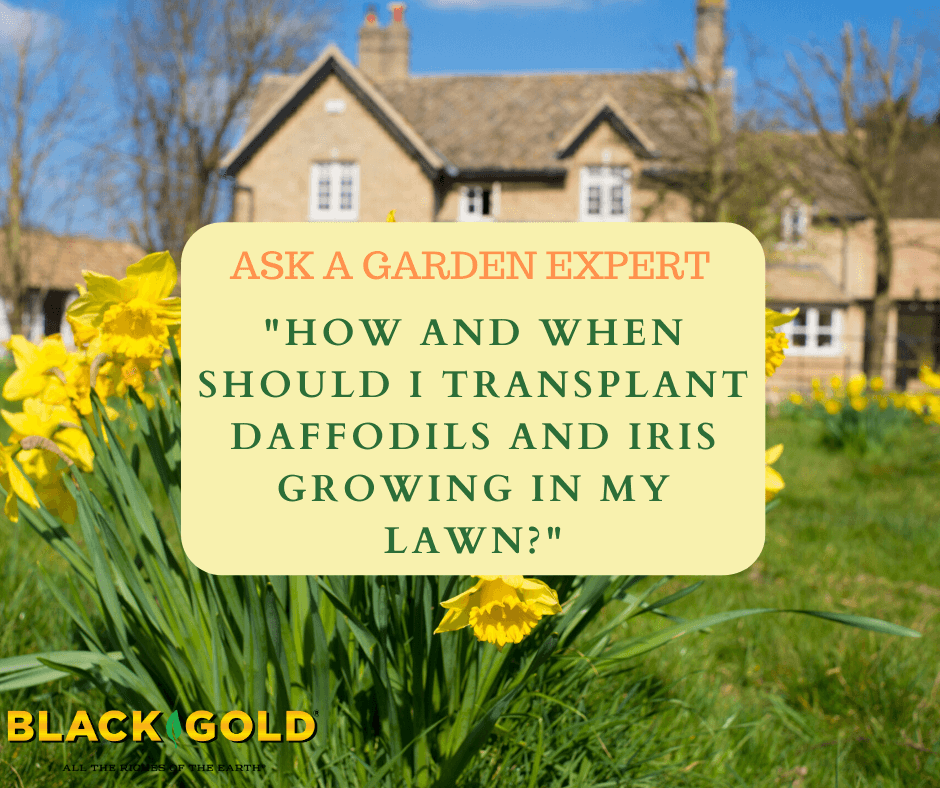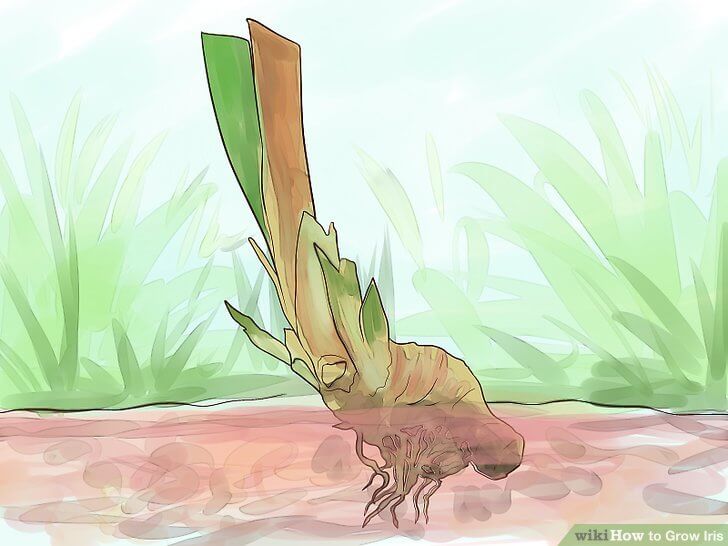
“I have had some Iris’s and Daffodils shoot up in my yard. I love these flowers, and would like to know when would be a good time to dig them up and move them so I don’t cut them down with a lawnmower.” Question from Stacey of Hueytown, Alabama
Answer: Bulbs are pretty when they flower in lawns, but mowing their tops does disable them from gathering as much food as possible for next spring’s bloom. The iris and daffodils should be removed differently.
Digging Daffodils in Spring

Wait until the daffodils have finished blooming. Mow around them, if you can, while they flower. Once their flowers are done, gently dig them up. If you use a long, sharp spade you can easily dig to the base of each daffodil clump and loosen the bulbs without disturbing the turf to much. Be sure to wear gloves. Try to maintain the green tops of the bulbs in the process. Next, place the bulbs in holes around the garden in need of spring color. Plant them 6 to 8 inches down, and leave their green leaves up top to gather as much sunshine as possible. Mix a little bonemeal fertilizer into each hole to get them off to a good start. Trim the leaves back when they start to turn brown.
Digging Iris in Spring
The iris can be dug now and planted in the garden. They grow best in well-drained, fertile soil, so we recommend enriching the planting holes with Black Gold Garden Soil at planting time. Not only is this amendment rich in organic matter, but it feeds plants for up to six months. If it is a tall bearded iris, be sure its fleshy rhizomes are partially exposed at the top (see image below). Total coverage with soil will smother them. Sometimes iris are top-heavy, so you will likely need to pat the soil down around the rhizome to keep the plants secure and upright.

I hope that this information helps!
Happy gardening,
Jessie Keith
Black Gold Horticulturist

